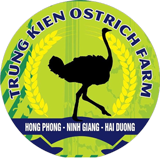In today’s interconnected world, student communities play a pivotal role in shaping academic and personal experiences.

These neighborhoods are not just collections of individuals but are dynamic ecological communities that cultivate development, finding out, and cooperation amongst pupils. They vary commonly in form and function, from campus-based groups to worldwide on the internet discussion forums, each offering distinct possibilities for interaction and growth.
Whether you are tipping onto a college campus for the first time or engaging in digital understanding atmospheres, understanding the framework and advantages of student areas can considerably boost your academic trip. This post delves into the essence of student neighborhoods, discovering just how they operate, the advantages they give, and the methods which they can be leveraged for individual and academic success.
Mục lục:
Comprehending Pupil Areas
Trainee neighborhoods are fundamental to the scholastic experience, functioning as both social and academic support systems. At their core, these areas are groups developed normally by trainees who share common passions, objectives, or fields of study. They can be informal, such as study hall, or official, like student unions and clubs.
These neighborhoods are identified by a common identification and the collective pursuit of expertise, skills, and experiences. They act as platforms for trainees to connect, work together, and add to each other’s growth, expanding beyond scholastic borders to influence individual development and community engagement.

Basically, student areas are microcosms of larger societal frameworks, where leadership abilities are sharpened, concepts are exchanged, and lifelong friendships are developed. The interactions within these neighborhoods show a diverse blend of cultural, intellectual, and social characteristics.
- Networking Opportunities: Trainee areas supply a network of peers and coaches who can offer assistance and support.
- Ability Growth: Participating in community tasks assists pupils establish vital abilities such as interaction, leadership, and synergy.
- Source Gain access to: These areas usually provide accessibility to scholastic sources, including research materials and expert advice.
- Social Engagement: They provide a platform for social communication, easing the shift into brand-new scholastic settings and aiding to deal with isolation.
Via these different functions, pupil neighborhoods become indispensable to the all natural growth of students, laying a structure for future expert and individual success.
The Advantages of Engaging in Pupil Neighborhoods
The advantages of participating in student neighborhoods are diverse, affecting both academic and individual rounds.

On a scholastic degree, these areas motivate joint learning, permitting pupils to gain from varied point of views and proficiency. Sharing expertise and resources within a community can cause more effective knowing outcomes and improved academic efficiency.
Furthermore, pupil areas use a system for personal growth and self-discovery. By involving with peers from different histories and techniques, pupils gain a more comprehensive worldview, improving their cultural proficiency and empathy. This direct exposure to diverse viewpoints is important in creating critical thinking and analytical abilities.
Furthermore, active participation in area activities can improve pupils’ self-confidence and self-worth. Tackling management duties or participating in conversations and events fosters a feeling of accomplishment and belonging, which is essential for total health and motivation.
Types of Pupil Communities
Student communities can be found in various kinds, each dealing with various rate of interests and objectives. These can be generally classified right into scholastic, social, recreational, and professional communities, to name a few. Each type gives distinct platforms and chances for student engagement.
- Academic Communities: These are generally centered around certain disciplines or academic passions. Instances include study hall, honors societies, and department clubs.
- Cultural Neighborhoods: These teams focus on promoting cultural recognition and diversity, typically organizing occasions and tasks to celebrate different customs.
- Entertainment Communities: These consist of sporting activities groups, entertainment clubs, and hobby-based teams that give a break from scholastic roughness and advertise physical and mental health and wellness.
- Specialist Areas: These are targeted at career advancement, using networking opportunities, workshops, and mentorship programs to prepare trainees for the specialist globe.
By recognizing and engaging with the ideal neighborhoods, pupils can customize their university experiences to line up with their passions and occupation goals, paving the way for a meeting scholastic journey.
Building a Growing Trainee Area
Creating and keeping a thriving pupil community requires initiative and cooperation from both trainees and educational institutions. It begins with promoting an inclusive setting where online learning all students feel welcomed and valued regardless of their backgrounds.
Establishments can sustain this by providing resources and facilities that motivate interaction and involvement. This consists of developing physical spaces like student unions and on the internet systems that promote communication and collaboration. In addition, organizing events, workshops, and seminars can further enhance engagement, offering students with opportunities to link and learn from each various other.
Management and Pupil Involvement
Efficient management is vital in nurturing an effective student neighborhood. Leadership duties within these areas supply students an opportunity to create and show their organizational and interpersonal skills. Students that presume these roles add dramatically to establishing the tone and instructions of their areas, influencing their peers favorably.
Encouraging leadership and active involvement amongst pupils not just strengthens the community however likewise encourages individuals, preparing them for future difficulties. By fostering a culture of cooperation and support, student communities can thrive, leaving a long-term effect on their members and the scholastic setting overall.

